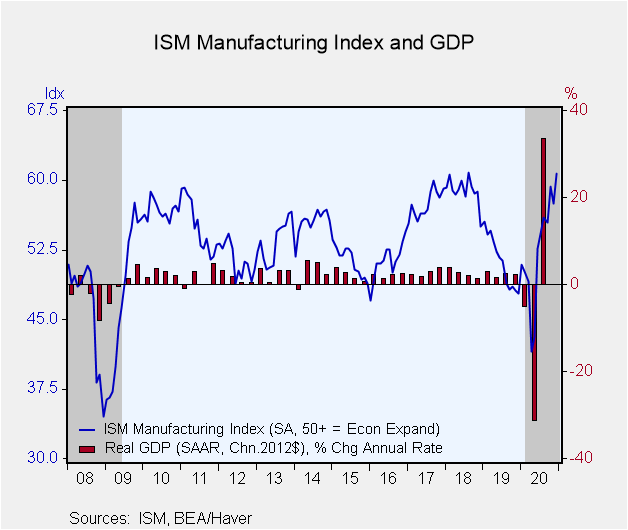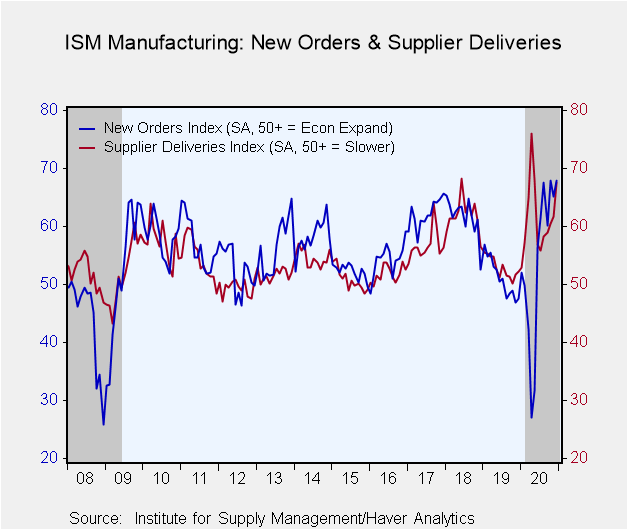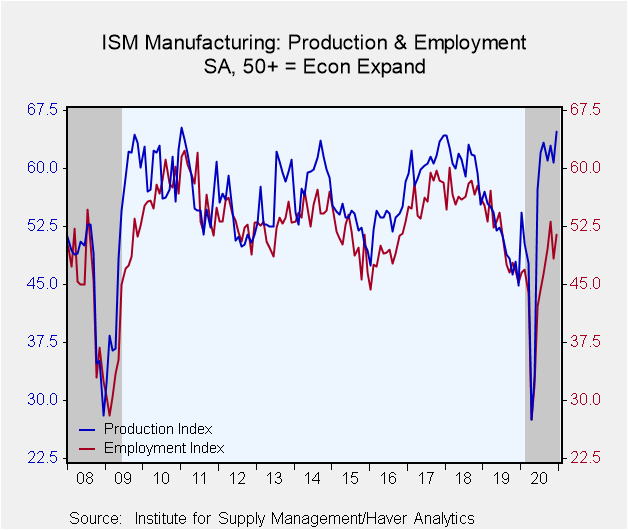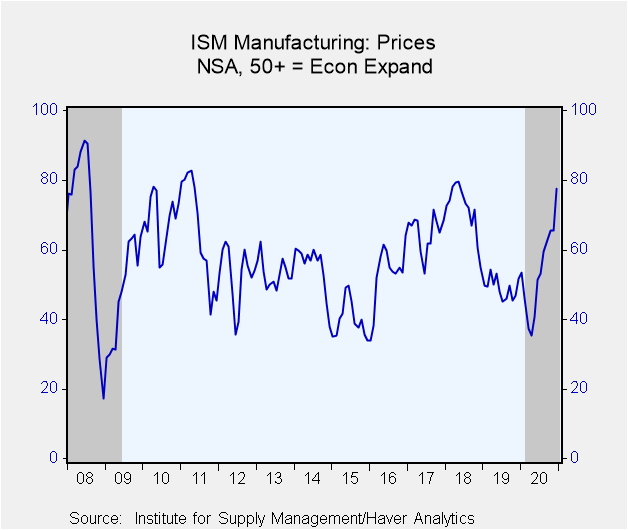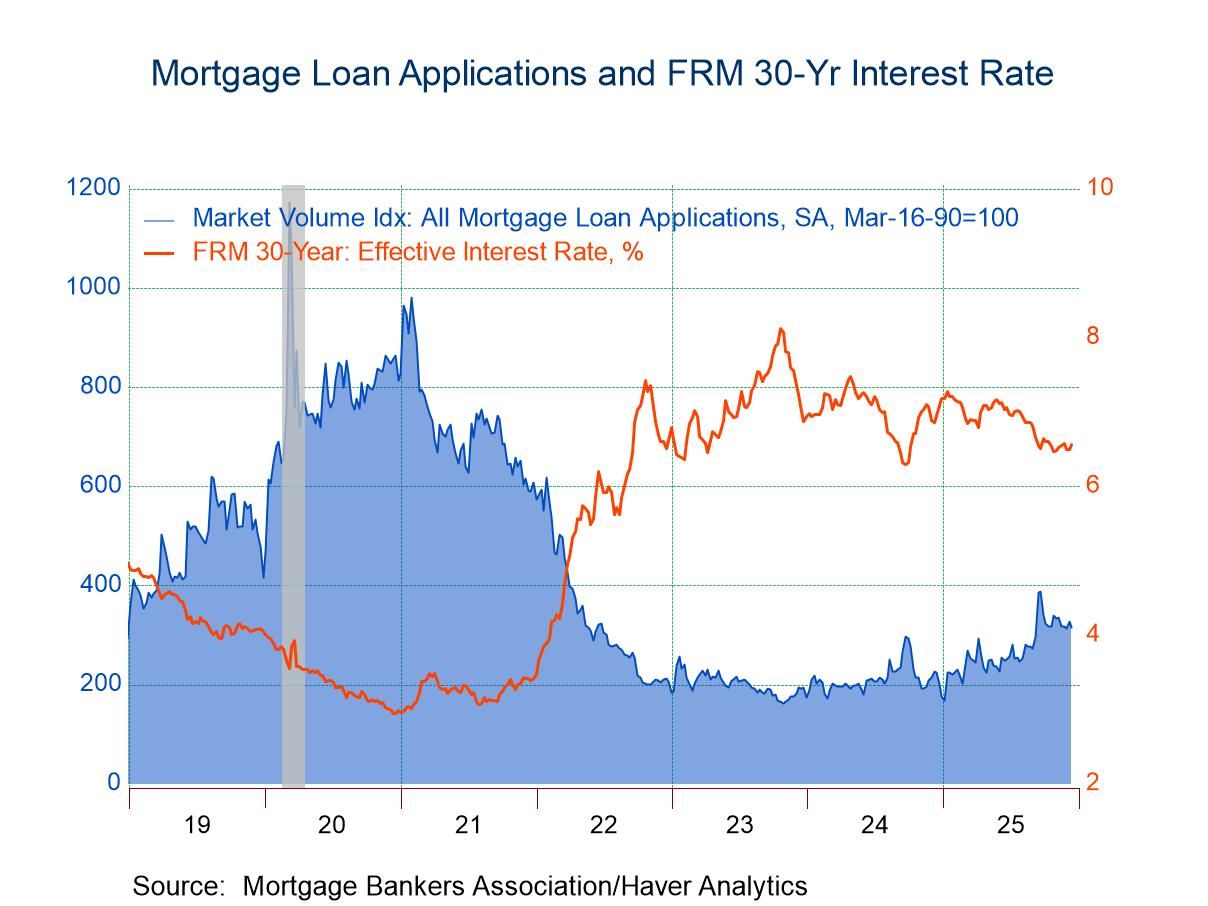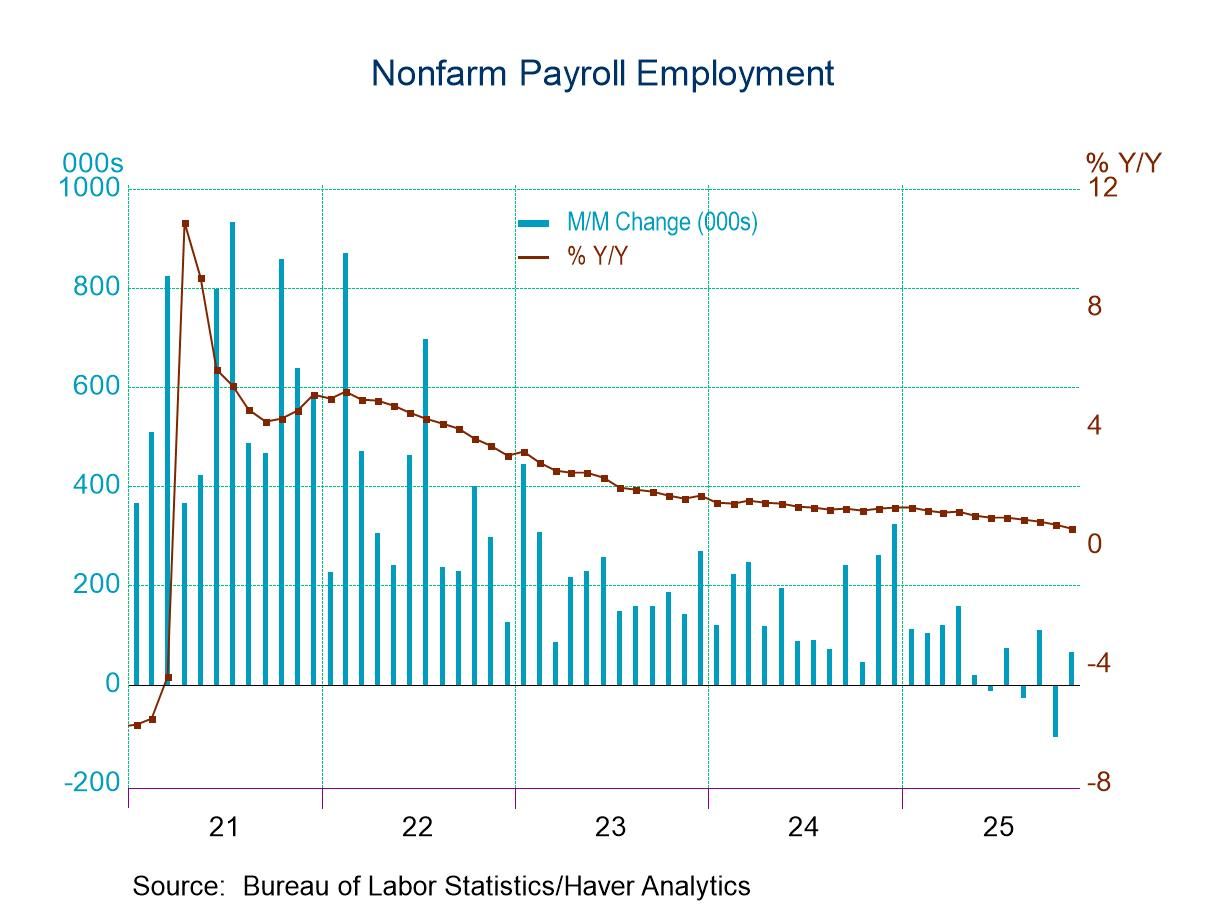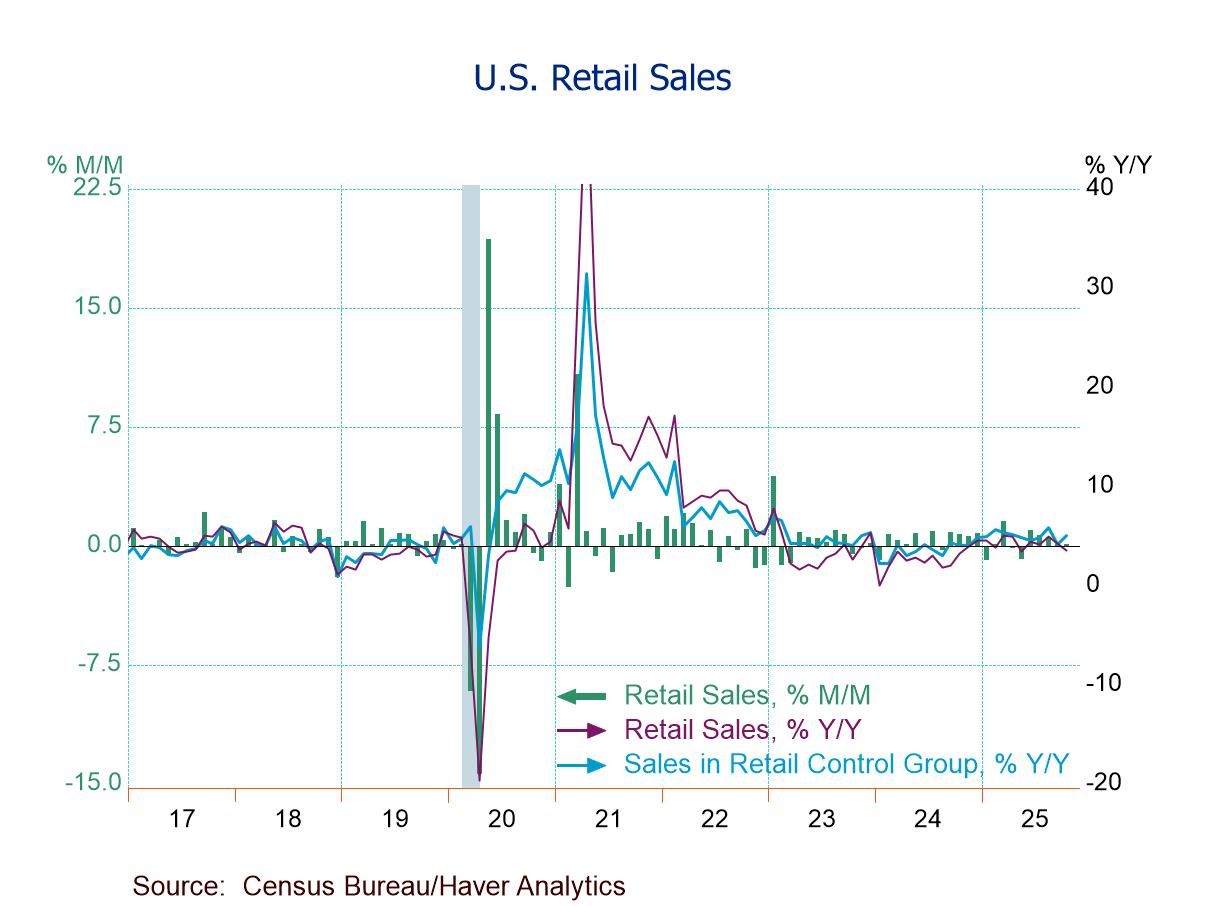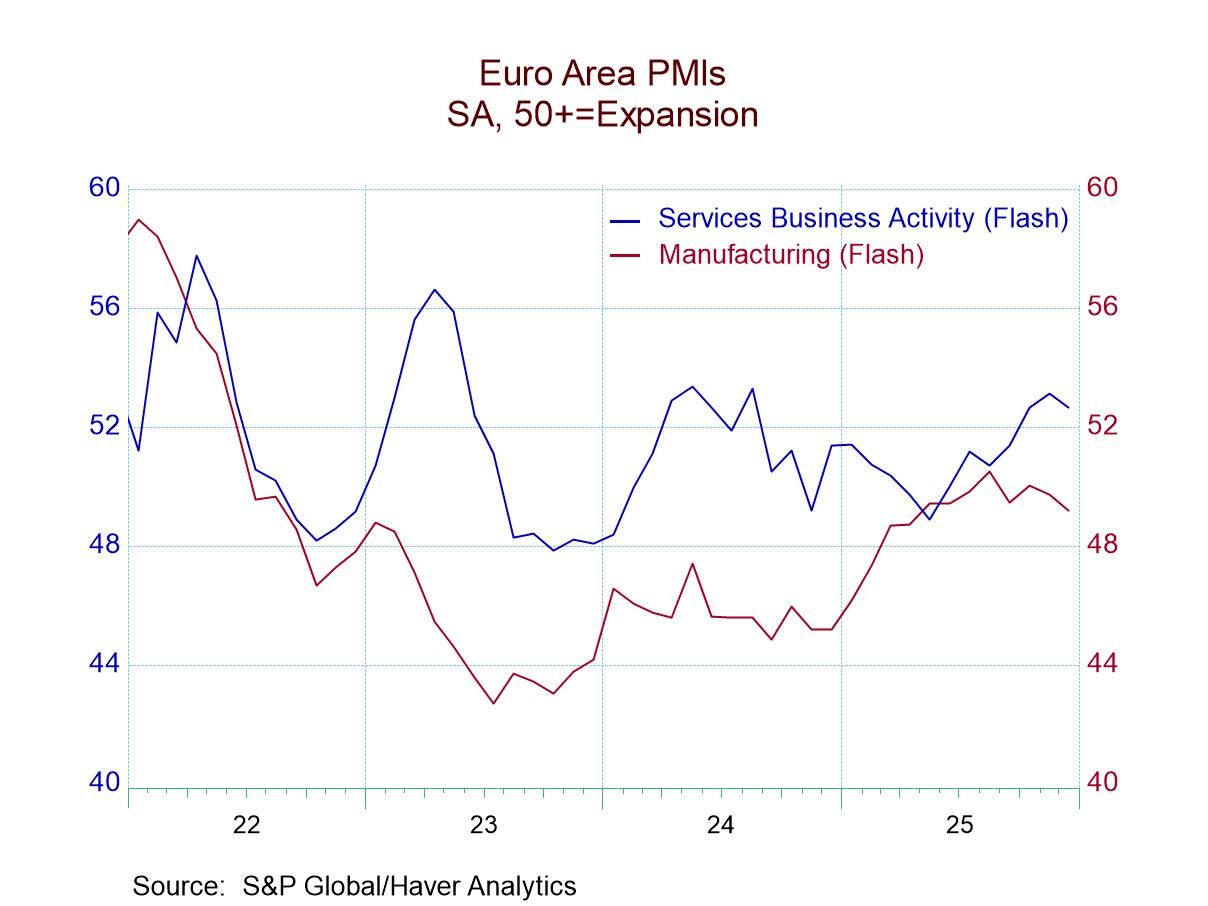 Global| Jan 05 2021
Global| Jan 05 2021ISM Manufacturing Index Unexpectedly Strengthens During December
by:Tom Moeller
|in:Economy in Brief
Summary
• Factory activity rebounds and exceeds its recent high. • Component improvement is broad-based. • Price index surges. The Institute for Supply Management (ISM) reported that its Composite Index of Manufacturing Sector Activity jumped [...]
• Factory activity rebounds and exceeds its recent high.
• Component improvement is broad-based.
• Price index surges.
The Institute for Supply Management (ISM) reported that its Composite Index of Manufacturing Sector Activity jumped to 60.7 during December and reversed its November fall to 57.5. A decline to 56.5 had been expected in the Action Economics Forecast Survey. It was the seventh consecutive month above the break-even level of 50 and the highest level since August 2018. During all of 2020 the index averaged 52.5, down from the high of 58.9 averaged in 2018. During the last 15 years, there has been a 43% correlation between the composite index and the quarterly change in real GDP. Before the recession began, there had been a 70% correlation.
The ISM stated, "Survey Committee members reported that their companies and suppliers continue to operate in reconfigured factories, but absenteeism, short-term shutdowns to sanitize facilities and difficulties in returning and hiring workers are causing strains that are limiting manufacturing growth potential."
The new orders index rebounded to 67.9, but has been moving sideways for the last five months. An improved 40% (NSA) of survey respondents reported stronger new orders while a higher 15% reported a decline. The production index increased to 64.8, up from the April low of 27.5. A lessened 32% (NSA) of respondents reported higher production and a lessened 13% reported a decline. The supplier deliveries index surged to 67.6 and indicated the slowest product delivery speeds since May. The inventories index edged higher to 51.6, indicating a third consecutive month of inventory accumulation.
Also rising during December was the employment measure which improved to 51.5 after falling to 48.4 in November. It remained up from April's recession low of 27.5. A steady 15% (NSA) of respondents reported higher payrolls while a lessened 16% reported a decline.
Pricing power dramatically improved. The prices paid index jumped to 77.6 (NSA) and compared to April's low of 35.3. It was the highest level since May 2018. A strengthened 58% of respondents reported higher prices compared to April's low of 10%. Three percent reported price declines, down from 39% in April.
Other series in the ISM report indicated mixed performance. The new export order measure was little-changed m/m at 57.5 but remained the highest level in roughly two years. The import series eased to 54.6 but remained above the break-even level of 50 for the sixth consecutive month. The order backlog measure surged to the highest level since June 2018 and remained greatly improved from the April low.
The ISM figures are based on responses from over 400 manufacturing purchasing executives from 20 industries, which correspond to their contribution to GDP in 50 states. These data are diffusion indexes where a reading above 50 indicates expansion. The figures from the Institute for Supply Management can be found in Haver's USECON database; further detail is found in the SURVEYS database. The expectations number is available in Haver's AS1REPNA database.
| ISM Mfg (SA) | Dec | Nov | Oct | Dec'19 | 2020 | 2019 | 2018 |
|---|---|---|---|---|---|---|---|
| Composite Index | 60.7 | 57.5 | 59.3 | 47.8 | 52.5 | 51.2 | 58.9 |
| New Orders | 67.9 | 65.1 | 67.9 | 47.6 | 54.1 | 51.1 | 61.6 |
| Production | 64.8 | 60.8 | 63.0 | 44.8 | 53.8 | 51.2 | 60.9 |
| Employment | 51.5 | 48.4 | 53.2 | 45.2 | 44.4 | 50.9 | 56.9 |
| Supplier Deliveries | 67.6 | 61.7 | 60.5 | 52.2 | 61.6 | 52.9 | 62.0 |
| Inventories | 51.6 | 51.2 | 51.9 | 49.2 | 48.8 | 49.8 | 52.9 |
| Prices Paid Index (NSA) | 77.6 | 65.4 | 65.5 | 51.7 | 54.0 | 49.1 | 71.7 |
Tom Moeller
AuthorMore in Author Profile »Prior to joining Haver Analytics in 2000, Mr. Moeller worked as the Economist at Chancellor Capital Management from 1985 to 1999. There, he developed comprehensive economic forecasts and interpreted economic data for equity and fixed income portfolio managers. Also at Chancellor, Mr. Moeller worked as an equity analyst and was responsible for researching and rating companies in the economically sensitive automobile and housing industries for investment in Chancellor’s equity portfolio. Prior to joining Chancellor, Mr. Moeller was an Economist at Citibank from 1979 to 1984. He also analyzed pricing behavior in the metals industry for the Council on Wage and Price Stability in Washington, D.C. In 1999, Mr. Moeller received the award for most accurate forecast from the Forecasters' Club of New York. From 1990 to 1992 he was President of the New York Association for Business Economists. Mr. Moeller earned an M.B.A. in Finance from Fordham University, where he graduated in 1987. He holds a Bachelor of Arts in Economics from George Washington University.


